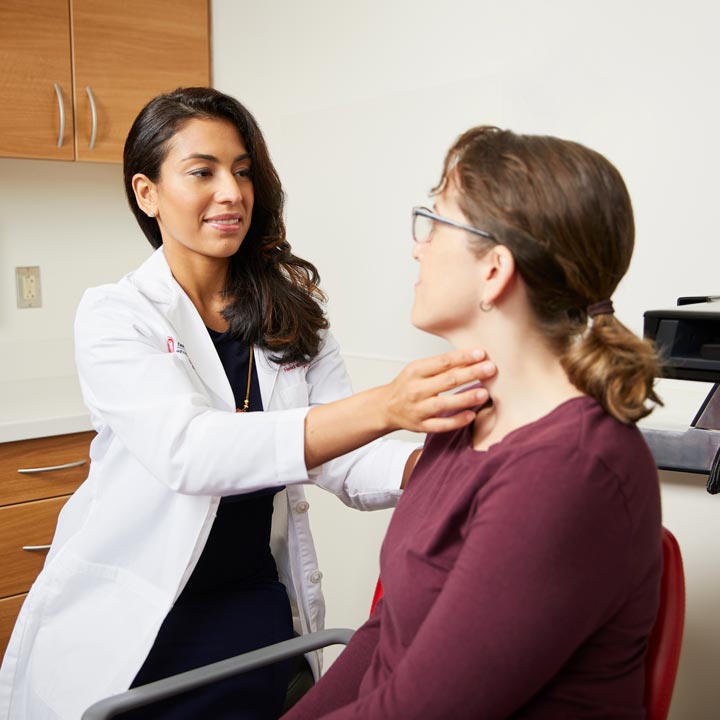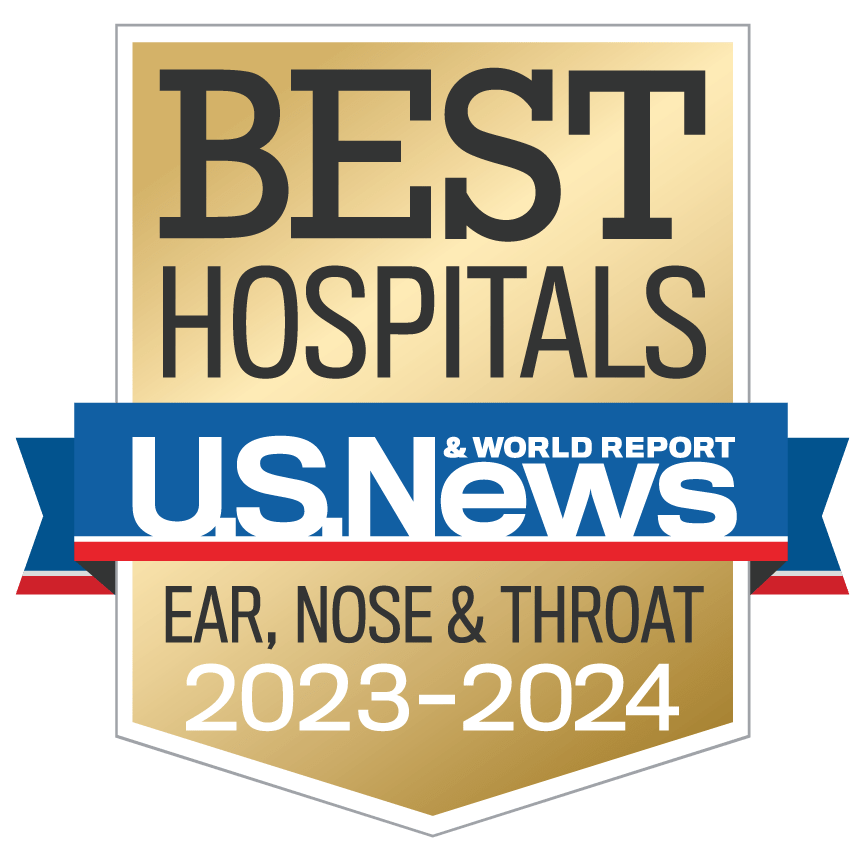 Addition enables the coordination of care for patients with cancer and swallowing disorders
Addition enables the coordination of care for patients with cancer and swallowing disorders
On any given day, hundreds of patients with head and neck cancer receive treatment at The Ohio State University Comprehensive Cancer Center – Arthur G. James Cancer Hospital and Richard J. Solove Research Institute (OSUCCC – James) — one of the highest patient volumes for head and neck cancer in the country.
Treating cancer is just the first step, though, because The Ohio State University Wexner Medical Center brings an institutional commitment to mitigating side effects from treatment and maximizing the quality of life for patients. That commitment includes treating dysphagia, or difficulty swallowing.
Apoorva Ramaswamy, MD, clinical assistant professor in the Department of Otolaryngology – Head and Neck Surgery at The Ohio State University College of Medicine, saw a need to support patients who’d received surgery or radiation to drive their cancer into remission and who, she found, displayed a propensity to develop esophageal dysmotility and other issues after treatment.
“As throat surgeons, we are well positioned for treating problems of the esophagus and other anatomy that is impacted by head and neck cancer treatment and which limits swallowing,” Dr. Ramaswamy says.
“These problems have often been neglected because we didn’t realize they were there.”
A dedicated space to treat dysphagia
As a laryngologist trained in throat surgery, Dr. Ramaswamy subspecialized in dysphagia before coming to the Ohio State Wexner Medical Center in 2021 and setting up the first dysphagia clinic in the country focused on care for head and neck cancer patients.
“The side effects of head and neck cancers and the treatments necessary to cure them often leave patients with long-term swallowing problems, which can severely impact their quality of life,” says Matthew Old, MD, professor and director of the Head and Neck Cancer Program at the OSUCCC – James. “Having Dr. Ramaswamy and our team of speech and language pathologists solely dedicated to this issue is a differentiator for our program and benefit to our patients.”
Research shows that dysphagia affects a significant portion of survivors of head and neck cancers. Up to 30% of patients develop aspiration pneumonia following treatment, and 30% of those patients will die within the first year after developing it.
Dr. Ramaswamy found that velopharyngeal insufficiency was a problem among this patient population. This disorder occurs when the palate, back of the throat and base of the tongue become dysfunctional, and there isn’t enough pressure to push food into the esophagus, leading to aspiration, choking or nasal regurgitation.
The first-of-its-kind clinic brings a dedicated, multidisciplinary approach to treating swallowing disorders for survivors of head and neck cancers. In addition to Dr. Ramaswamy, the team in the clinic includes speech and swallowing pathologists, dietitians, physical therapists and social workers.
While other cancer centers treat dysphagia, the Ohio State Wexner Medical Center is unique in the volume and range of problems the clinic addresses. In just over a year of operating, the dysphagia clinic has had nearly 1,000 visits. Dr. Ramaswamy and her team complete outpatient procedures, including pharyngeal augmentation and balloon dilations in the clinic and operating room.
Working hand in hand with head and neck cancer surgeons — and being housed within the cancer center — the clinic provides continuity of care for patients following treatment to address problems early.
Conducting research at the source
Because dysphagia diagnosis and treatment haven’t been deeply studied, research is an important part of the clinic’s mission — an effort the high patient volume in the clinic has supported.
“So much of what treating these patients has uncovered is that there are problems we never recognized until we began focusing on these quality-of-life concerns,” Dr. Ramaswamy says.
One research focus in the clinic is a better diagnostic test for velopharyngeal dysfunction. The current test (modified barium swallowing) only recognizes a third of cases, which is a challenge considering nearly a third of patients with head and neck cancer present with these issues.
The clinic is also researching treatment efficacy, including outcomes reported by patients, to better understand how to objectively measure treatments’ impact on the adult cancer population from a quality-of-life perspective.
The clinic is evaluating a combination of steroids and antibiotics to reduce swelling, pain and scarring from procedures. An initial presentation from 50 procedures showed that patients receiving this cocktail didn’t experience these complications, which previously had often resulted in emergency department visits.
Building a patient-centered future
At this point, the clinic mainly treats dysphagia in patients who’ve completed cancer treatment, but eventually, Dr. Ramaswamy would like to identify patients much earlier in the process to prevent speech and swallowing issues from ever developing.
“In a busy head and neck cancer center, this is a valuable practice, and there are a lot of patients we can medically and surgically treat,” Dr. Ramaswamy says. “There are issues we’ve not been addressing as part of cancer treatment, and by focusing on them now, we can improve the quality of life for these patients.”

2024 Year in Review
See how Ohio State is shaping the field of Otolaryngology – Head and Neck Surgery.

